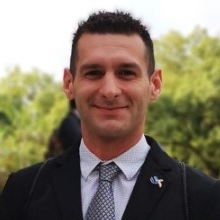Effects of Physical Exercise on Human Physiology and Pathology
A special issue of Biology (ISSN 2079-7737). This special issue belongs to the section "Physiology".
Deadline for manuscript submissions: closed (31 May 2023) | Viewed by 16247
Special Issue Editors
Interests: exercise physiology; skeletal muscle, insulin resistance; diabetes; rehabilitation and physical medicine; metabolism; muscle hypertrophy; exercise training adaptation; systemic inflammation; cardiovascular disease; arterial stiffness; hypertension
Interests: exercise science; strength & conditioning planning; resistance training; exercise testing; physical fitness; exercise physiology; physical activity assessment; performance testing; personal training
Special Issues, Collections and Topics in MDPI journals
Interests: skeletal muscle; oxidative stress; exercise training; heart failure; respiratory muscle training; aging, muscle protein synthesis; caloric restriction; muscle strength; insulin resistance; muscle blood flow; physical therapy; rehabilitation medicine
Interests: skeletal muscle; exercise physiology; diabetes; exercise training; muscle protein synthesis; insulin signaling; muscle strength; insulin resistance; glucose metabolism
Special Issue Information
Dear Colleagues,
This special issue of "Effects of Physical Exercise on Human Physiology and Pathology" focuses on the acute, short-term, and long-term effects of exercise training on physiological responses and pathological changes in the human body. Fundamental knowledge in physiology and pathology in response to exercise is critical to constructing precise exercise prescriptions and training programs for specific populations, including individuals with cardiovascular disease, metabolic syndrome, respiratory system diseases, cancer, and neurological problems (e.g., spinal cord injury, multiple sclerosis, cognitive function, Alzheimer's disease, etc.). While a variety of exercise strategies have demonstrated the health benefits of exercise, there is considerable scope to better understand the efficacy of novel and commonly used exercise modalities, including specific exercise mode and training techniques, as well as identifying optimal exercise dose parameters and training duration, cellular/molecular mechanisms, and functional outcomes.
This special issue is seeking original research (basic or multidisciplinary approaches) articles and reviews (narrative reviews, systematic reviews, meta-analysis) that focus on the acute, short-term, and long-term impacts of exercise training on human physiological responses and pathological changes. Topics of special interest include the following.
Prof. Dr. Yi-Hung Liao
Dr. Giancarlo Condello
Prof. Dr. Chiao-Nan Chen
Dr. Jeffrey R. Bernard
Guest Editors
Manuscript Submission Information
Manuscripts should be submitted online at www.mdpi.com by registering and logging in to this website. Once you are registered, click here to go to the submission form. Manuscripts can be submitted until the deadline. All submissions that pass pre-check are peer-reviewed. Accepted papers will be published continuously in the journal (as soon as accepted) and will be listed together on the special issue website. Research articles, review articles as well as short communications are invited. For planned papers, a title and short abstract (about 100 words) can be sent to the Editorial Office for announcement on this website.
Submitted manuscripts should not have been published previously, nor be under consideration for publication elsewhere (except conference proceedings papers). All manuscripts are thoroughly refereed through a single-blind peer-review process. A guide for authors and other relevant information for submission of manuscripts is available on the Instructions for Authors page. Biology is an international peer-reviewed open access monthly journal published by MDPI.
Please visit the Instructions for Authors page before submitting a manuscript. The Article Processing Charge (APC) for publication in this open access journal is 2700 CHF (Swiss Francs). Submitted papers should be well formatted and use good English. Authors may use MDPI's English editing service prior to publication or during author revisions.
Keywords
- aerobic exercise/resistance exercise/interval exercise/respiratory muscle training
- sarcopenia and frailty
- systemic inflammation
- cardiovascular diseases (hypertension, dyslipidemia, atherosclerosis, etc.)
- respiratory system diseases (asthma, chronic obstructive pulmonary disease, etc.)
- metabolic syndrome (type 1/2 diabetes, prediabetes, etc.)
- cancer
- environmental factors (e.g., heat, cold, hypoxia, etc.)
- functional exercise capacity (cardiopulmonary fitness)
- spinal cord injury (SCI)
- brain health
- stroke (cerebrovascular accident, CVA)
- degenerative neurological diseases (multiple sclerosis, Alzheimer's disease, Parkinson’s diseases, etc.)







